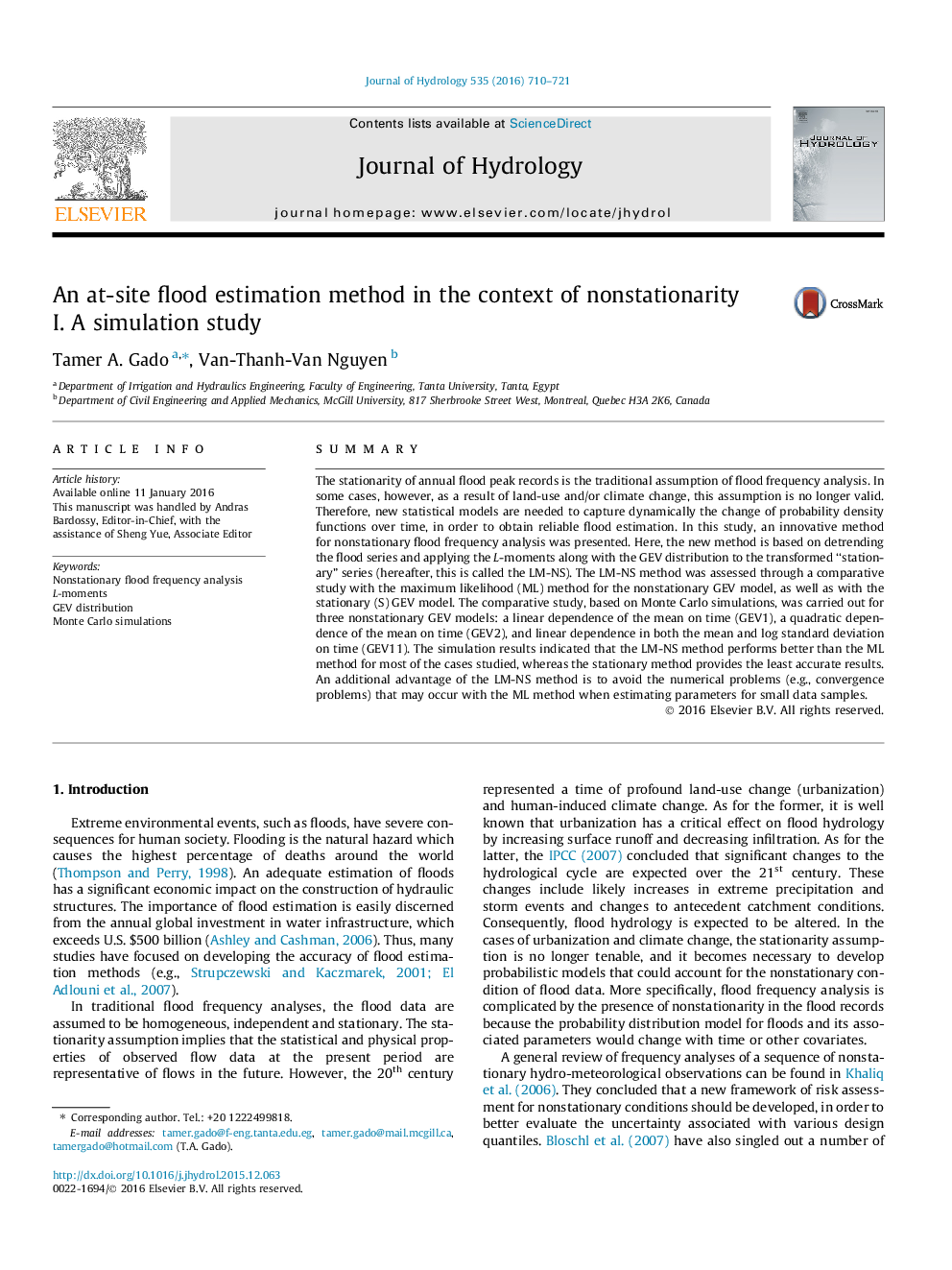| کد مقاله | کد نشریه | سال انتشار | مقاله انگلیسی | نسخه تمام متن |
|---|---|---|---|---|
| 6410178 | 1629917 | 2016 | 12 صفحه PDF | دانلود رایگان |

- An innovative method for nonstationary flood frequency analysis will be presented.
- The method is based on applying the L-moments to the transformed “stationary” series.
- The new method performs better than the maximum likelihood method.
SummaryThe stationarity of annual flood peak records is the traditional assumption of flood frequency analysis. In some cases, however, as a result of land-use and/or climate change, this assumption is no longer valid. Therefore, new statistical models are needed to capture dynamically the change of probability density functions over time, in order to obtain reliable flood estimation. In this study, an innovative method for nonstationary flood frequency analysis was presented. Here, the new method is based on detrending the flood series and applying the L-moments along with the GEV distribution to the transformed “stationary” series (hereafter, this is called the LM-NS). The LM-NS method was assessed through a comparative study with the maximum likelihood (ML) method for the nonstationary GEV model, as well as with the stationary (S) GEV model. The comparative study, based on Monte Carlo simulations, was carried out for three nonstationary GEV models: a linear dependence of the mean on time (GEV1), a quadratic dependence of the mean on time (GEV2), and linear dependence in both the mean and log standard deviation on time (GEV11). The simulation results indicated that the LM-NS method performs better than the ML method for most of the cases studied, whereas the stationary method provides the least accurate results. An additional advantage of the LM-NS method is to avoid the numerical problems (e.g., convergence problems) that may occur with the ML method when estimating parameters for small data samples.
Journal: Journal of Hydrology - Volume 535, April 2016, Pages 710-721